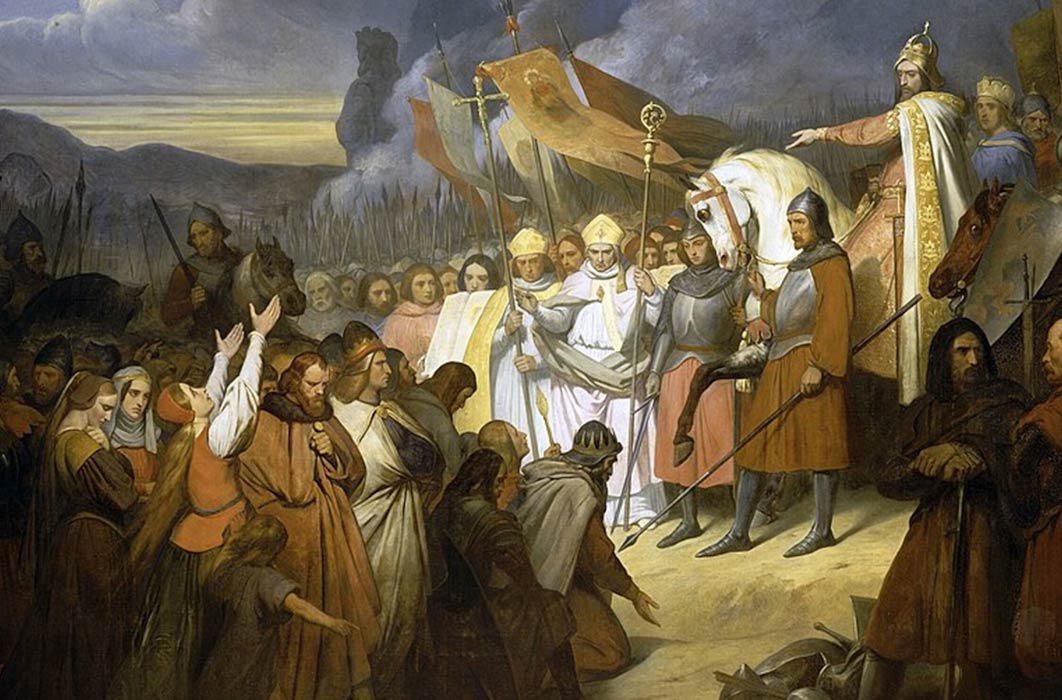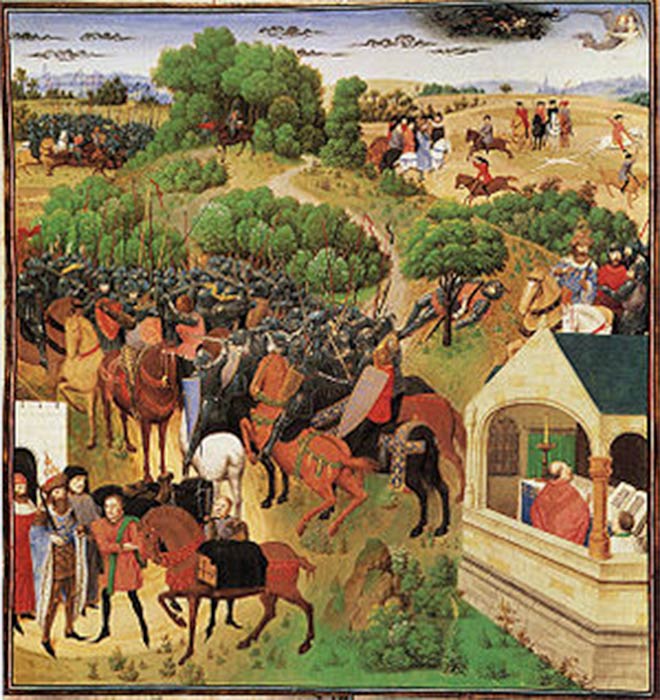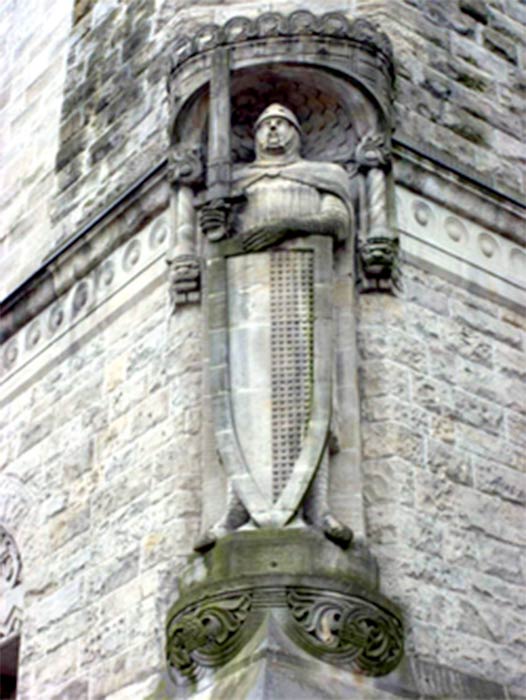
The Facts and Fiction of Charlemagne and His Paladin
In the early Middle Ages, the most eminent members who surrounded the sovereign of the empire were defined as Paladins, or Palatine Counts, who, among various other duties, served as Judges for Preliminary Investigations, to bring before the Emperor only those cases worthy of his personal judgement. The Matter of France, (also known as the Carolingian cycle), a body of literature and legendary material, addressing mostly Charlemagne and his associates, would be the equivalent of King Arthur in the Matter of Britain. Over the years and through flourishing myths and legends, the Paladins, fired by the collective imagination, were identified as the valiant defenders of the weak, of the poor pilgrims against the onslaught of the Moors, and as role models of chivalry.

The eight phases of The Song of Roland in one picture. Grandes Chroniques de France, St. Petersburg. (Public Domain)
It is known that the collective imagination, often and willingly, far exceeds the historical truth, and so the Paladins par excellence became the fearless ‘knights in shining armor’, defenders of the weak against the obtuse arrogance of the powerful and in the epic knightly poems, such as the Song for Roland, the almost legendary figures of the ‘Twelve Paladins’, began to emerge at the court of Charlemagne. The names of the Twelve vary according to the sources. One would always find Orlando, ‘nephew of the emperor’ and head of the Paladins, together with Oliviero, Gerino, and Berengario. Other sources describe the adventures of Turpino, Riccardo the Elder, Tebaldo da Reims and other much lesser-known, yet bold defenders, who lived more in the imagination of the trovadori than in historical reality.

A statue of Roland at Metz railway station, France. (Archimatth / CC BY-SA 4.0)
Legendary Origins of Orlando
Brave Orlando, Count of Blaye, Marquis of Chiaramonte, Gonfaloniere of the Roman Catholic Church had a humble birth in a cave at Sutri, - or the ancient Sutrium, a town about 50 kilometers (31 miles) from Rome, a village gracefully dating back to the Bronze Age. Legends and historical data overlap in a patchwork of fanciful inaccuracies in the ancient chronicles, but they tell that a gentlewoman named Berta, sister of Charlemagne, had fallen in love with Milion, who although he was a bold and valiant warrior, he had one unforgivable flaw: he was not of noble birth.

A glimpse of the so-called "Cave of Orlando" in Sutri (Rome) (Image: Courtesy Dr. Roberto Volterri)
Thus, since even in those times of noblesse oblige, the emperor Charlemagne would have expelled both his sister and this untitled young lord from the imperial court. To lose the emperor's protection was already a misfortune, but to have a gentlewoman expecting her heir, was an even greater cause for concern, especially in circumstances where she stood to lose her royal salary. So, the bold Milon set off towards Rome, to implore the Prince of the Apostles, - the pope - to appeal to the emperor, to reconsider the circumstances. Along the Via Francigena, (today's Via Cassia), poor Berta was caught up in the pains of her imminent birth and in a cave, she borne a beautiful baby boy, reminiscent of a similar humble birth in a shelter 12 centuries earlier in the Holy Land.




